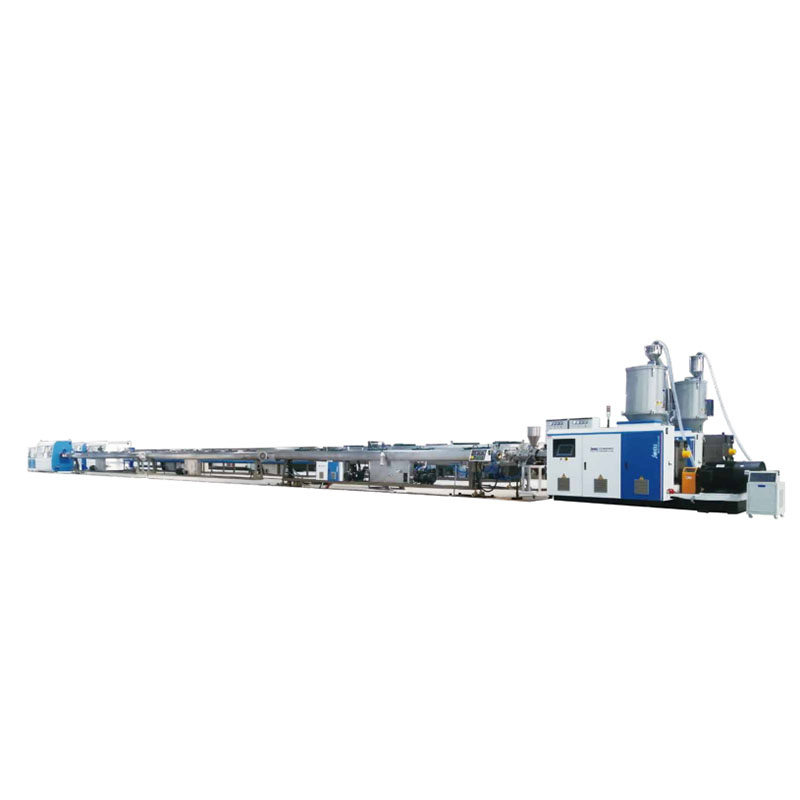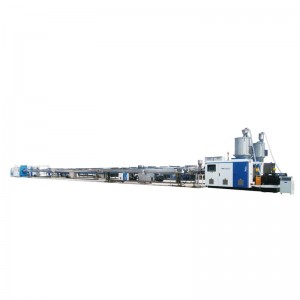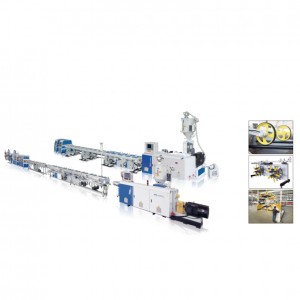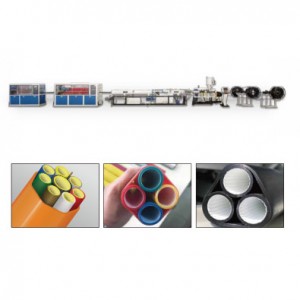High-speed Energy-saving HDPE Pipe Extrusion Line
Main Technical Parameter
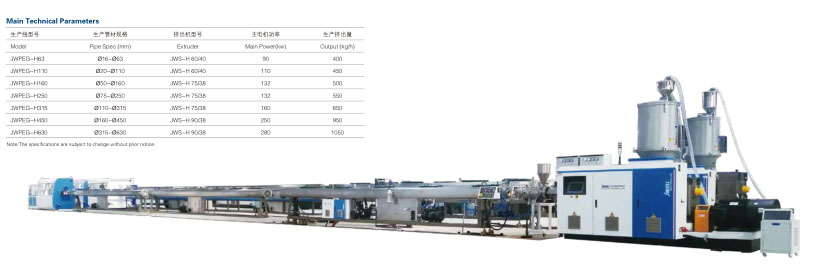
Performance & Advantages
Our company's latest research and development of energy-saving high-speed production line, suitable for high-speed polyolefin pipe extrusion. 35% energy saving and 1x increase in production efficiency. Specifically designed 38-40 L/D screw structure and the feeding slot barrel make the melt extrusion and plasticizing effects greatly improved. High-torque, high-strength gearboxes ensure stable operation of the equipment. Extrusion molds and sizing sleeves adopt the most advanced design structure. The PLC variable frequency control vacuum tank, servo-driven multi-track tractor, and high-speed chip-less cutter are equipped with a meter weight control system. The pipe extrusion weight is more accurate.
HDPE pipe is a flexible plastic pipe made of thermoplastic high-density polyethylene widely used for low-temperature fluid and gas transfer. In recent times, HDPE pipes got their extensive uses for carrying potable water, hazardous wastes, various gases, slurry, firewater, stormwater, etc. The strong molecular bond of HDPE pipe materials helps it to use for high-pressure pipelines. Polyethylene pipes have a long and distinguished service history for gas, oil, mining, water, and other industries. Due to its low weight and high corrosion resistance, the HDPE pipe industry is growing tremendously. In the year 1953, Karl Ziegler and Erhard Holzkamp discovered high-density polyethene (HDPE). HDPE pipes can work satisfactorily in a wide temperature range of -2200 F to +1800 F. However, the use of HDPE Pipes is not suggested when the fluid temperature exceeds 1220 F (500 C).
HDPE pipes are made by the polymerization of ethylene, a by-product of oil. Various additives (stabilizers, fillers, plasticizers, softeners, lubricants, colorants, flame retardants, blowing agents, crosslinking agents, ultraviolet degradable additives, etc.) are added to produce the final HDPE pipe and components. HDPE pipe lengths are made by heating the HDPE resin. It is then extruded through a die, which determines the diameter of the pipeline. The Pipe wall thickness is determined by a combination of the die size, speed of the screw, and the speed of the haul-off tractor. Usually, 3-5% carbon black is added to HDPE to make it UV resistant, which turns HDPE pipes into black in color. Other color variants are available but usually not used frequently. Coloured or striped HDPE pipe is usually 90-95% black material, where a colored stripe is provided on 5% of the outside.

